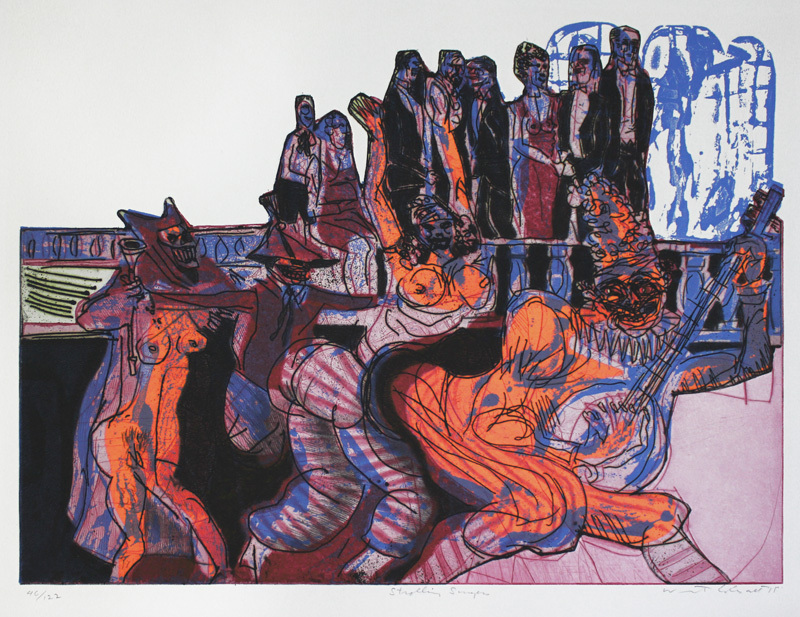
19th, 20th & 21st Century Fine Prints
707-546-7352 · fax 707-546-7924 · web: www.annexgalleries.com · email: artannex@aol.com
Strolling Singers (from Death in Venice) by Warrington Colescott

Strolling Singers (from Death in Venice)
Warrington Colescott
Strolling Singers (from Death in Venice)
Warrington Colescott
1921 - 2018 (biography)In Thomas Mann’s “Death in Venice,” the protagonist Gustav von Aschenbach is vacationing in the famed Italian city after a chance crossing with a stranger - gaunt and staring - is followed by a dream of a hot, exotic, and dangerous place, haunting his waking thoughts. He decides to take a break from his work as a writer and artist to realize this dream. He ends up in Venice, where he falls under the spell of a Dutch youth and follows him throughout the city even as the youth’s family surrounds him. Ultimately, Aschenbach, who has been ignoring the warnings of a cholera outbreak in order to focus on the boy - and to ignore his own mortality - catches the deadly disease and eventually dies as he attempts to approach the boy on a beach.
The “strolling singers” are used in Mann’s story as a vehicle for illustrating the protagonist’s tenuous existence, the troupe acting as a juxtaposition of strange jollity against the background of impending outbreak. In this piece Warrington Colescott uses a shaped, angular plate and saturated blues and reds to convey a sense of jaunty movement and celebration, the shadowed figures in the background representing the city’s wealthy visitors. A skull-like face is found among the troupe: the stranger, always watching.
